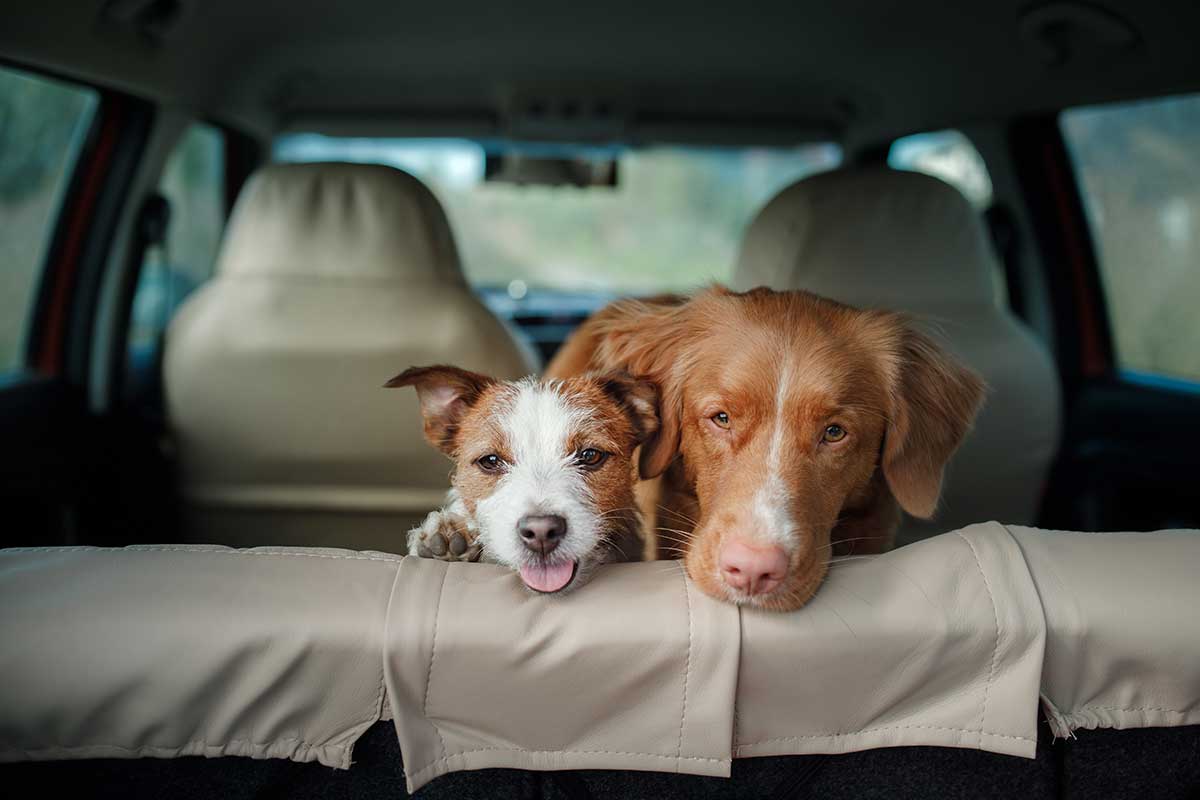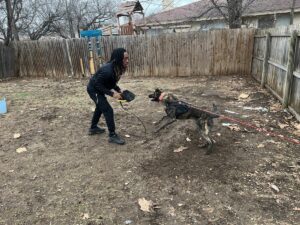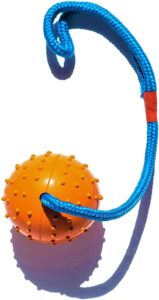If you’ve ever experienced the chaos of a restless pet during a car ride, then you know just how overwhelming it can be. But fear not! In this article, you’ll discover some effective strategies to keep your furry friend calm and content in the car. From soothing music to comfortable crates, these tips will help create a stress-free travel experience for both you and your beloved pet. Say goodbye to anxious barking and hello to peaceful, enjoyable car rides!
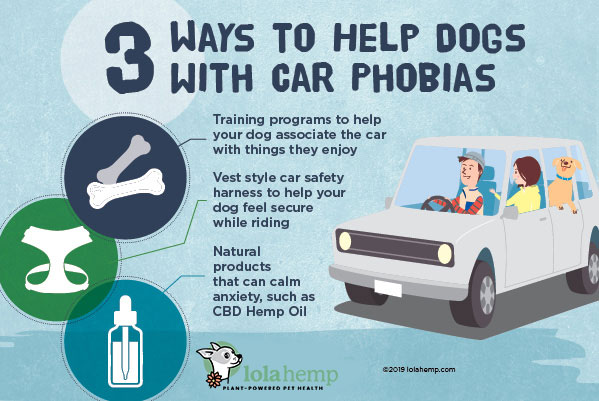
This image is property of www.handicappedpets.com.
Prepare in advance
Before embarking on a car ride with your pet, it’s important to prepare in advance to ensure a smooth and stress-free journey. Gather the necessary supplies such as a leash, water bowl, food, treats, waste bags, and any medication your pet may need. Having these essentials readily available will save you from last-minute scrambling and ensure your pet’s comfort throughout the ride.
Familiarize your pet with the car by introducing them to the vehicle gradually. Start by allowing them to explore the car when it’s parked, rewarding them with treats and praise for positive behavior. This will help your pet become familiar with the car’s smell, layout, and overall environment, making them more comfortable when it’s time to hit the road.
In addition to familiarization, take short practice trips to acclimate your pet to being in a moving vehicle. Start by going on quick, low-stress drives around the block, gradually increasing the duration and difficulty of the trips. This will help your pet build confidence and reduce anxiety when it comes to longer car rides.
Secure your pet safely
Ensuring your pet’s safety is paramount during car rides. Using a pet carrier is a highly recommended option for small to medium-sized pets. Choose a carrier with ample ventilation, a secure latch, and enough space for your pet to stand, turn around, and lie down comfortably. Secure the carrier with a seatbelt or place it in the footwell or backseat to prevent it from sliding or tipping over during sudden stops or turns.
If a pet carrier is not suitable for your pet, consider using a pet seat belt. These harnesses attach to your car’s existing seatbelt system and can provide a secure restraint for your furry friend. Be sure to choose a harness that is specifically designed for pets and not a regular human seatbelt, as these may not adequately protect your pet in the event of an accident.
Another option is to install a pet barrier in your vehicle. These barriers act as a partition between the front and back seats, preventing your pet from accessing the driver’s area or jumping around the car. Pet barriers are especially useful for larger dogs or pets that may be prone to getting anxious or agitated during travel.
Create a comfortable environment
To keep your pet calm during car rides, it’s essential to create a comfortable and familiar environment for them. Use a familiar blanket or bed in their carrier or designated area to provide a sense of security and comfort. The familiar scent and texture will help ease their anxiety and make the car feel more like home.
Control the temperature in the car to ensure your pet’s comfort. Avoid leaving your pet in a hot or stuffy car, as this can be dangerous and even fatal. If the weather is warm, use air conditioning or open windows to maintain a cool and well-ventilated environment. During colder months, provide blankets or extra bedding to keep your pet warm and cozy.
Minimize outside distractions to help your pet stay calm and focused during the car ride. Close the windows if loud noises or strong smells are present, as these can cause anxiety or overstimulation in some pets. Consider using sunshades or curtains to block excessive sunlight and reduce visual distractions that may cause restlessness or agitation.
Consider alternative anxiety-relief strategies
If your pet experiences anxiety during car rides, there are several alternative strategies you can try to help alleviate their stress. Calming supplements or treats specifically formulated for pets can promote relaxation and reduce anxiety. Consult with your veterinarian to find the best option for your pet’s specific needs and follow the recommended dosage.
Aromatherapy or pheromone therapy can also help soothe nervous pets. Lavender or chamomile essential oils can be diluted and sprayed in the car or on a bandana for your pet to wear. Similarly, synthetic pheromones like Adaptil for dogs or Feliway for cats can create a calming environment by mimicking natural pheromones and reducing stress-related behavior.
If your pet’s anxiety persists, consult with your veterinarian for potential medication options. They may prescribe anti-anxiety medications or sedatives to help your pet relax during car rides. It’s essential to follow the prescribed dosage and guidelines provided by your veterinarian and monitor your pet closely for any adverse reactions or side effects.
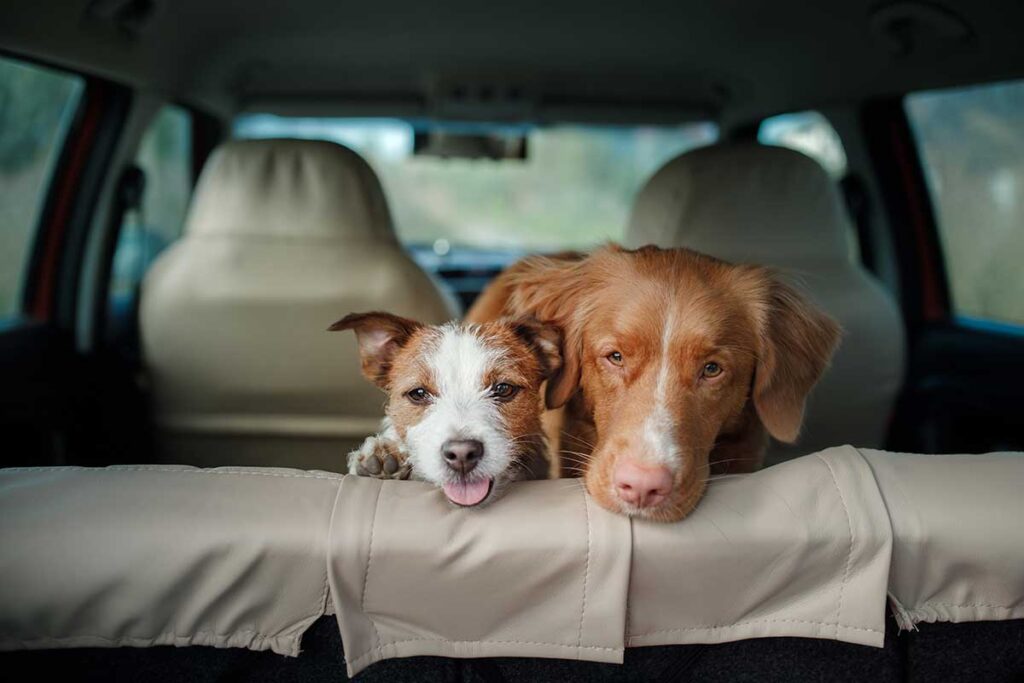
This image is property of www.nutravet.co.uk.
Provide regular breaks for bathroom and exercise
During long car rides, it’s important to plan frequent restroom stops for your pet. Just like humans, pets need regular bathroom breaks to relieve themselves. Research the route in advance and identify pet-friendly stops where your pet can stretch their legs and take care of their bathroom needs. This will help prevent accidents in the car and provide your pet with a chance to stretch and move around.
In addition to bathroom breaks, engage in short exercise sessions during the breaks to help release pent-up energy. Play a quick game of fetch or go for a short walk to allow your pet to burn off excess energy and prevent restlessness during the remainder of the car ride. Remember to always keep your pet on a leash and in a safe and controlled environment during these exercise sessions.
Offer water and food during breaks to keep your pet hydrated and nourished. Pack a travel-friendly water dispenser and provide small, easily digestible meals or treats throughout the journey. Avoid feeding your pet a large meal right before a car ride to prevent motion sickness or an upset stomach.
Play soothing music or white noise
Sound can play a significant role in keeping your pet calm during car rides. Choose calm and familiar tunes to create a soothing environment. Classical music or instrumental melodies are generally well-received by pets and can help drown out external noises that may cause anxiety.
Consider using noise-cancelling technology to block out excessive noise that may startle or distress your pet. Noise-cancelling headphones or earplugs specifically designed for pets can help create a quieter and more serene atmosphere, especially if your pet is sensitive to loud sounds.
Experiment with different sounds to find what works best for your pet. Some pets may respond positively to nature sounds, such as rainfall or birdsongs, while others may find comfort in white noise, like a fan or a sound machine set on a low volume. Observe your pet’s behavior and relaxation levels to determine the most effective sound therapy for them.
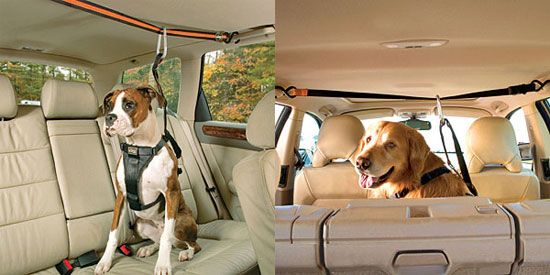
This image is property of www.batcopetsitting.com.
Practice positive reinforcement
Positive reinforcement is a powerful tool when it comes to training and calming pets during car rides. Reward calm behavior by offering verbal praise, gentle petting, or small treats. This will help your pet associate calmness with positive experiences and reinforce their relaxed behavior during car rides.
Use verbal praise and treats to reinforce desired behavior during the journey. For example, if your pet remains calm and quiet during the drive, provide verbal praise and offer a small treat as a reward. This positive reinforcement will encourage your pet to repeat the calm behavior in future car rides.
Associate car rides with positive experiences to help your pet develop a positive mindset towards traveling. Take your pet on short trips to enjoyable destinations, such as the park or a favorite hiking trail, instead of solely using the car for vet visits or unpleasant outings. This will help your pet associate car rides with excitement and pleasure, reducing their anxiety and increasing their overall enjoyment of the journey.
Limit the car ride duration
Pets, especially those who are not accustomed to car rides, may feel overwhelmed during long journeys. To prevent stress and discomfort, it’s important to plan for shorter drives whenever possible. Opt for shorter routes or plan more frequent stops to give your pet a chance to rest and recuperate.
Breaking up long trips with rest stops is crucial for your pet’s physical and mental well-being. Identify suitable spots along your route to take breaks, stretch your legs, and allow your pet to relieve themselves. These breaks not only give your pet a chance to stretch and move around but also provide an opportunity for them to relax and decompress before continuing the journey.
Schedule breaks during the journey to ensure your pet’s comfort and reduce the chances of fatigue or anxiety. Plan for regular intervals, such as every two hours, to stop and provide your pet with a break from the car. This will help them regulate their body functions and maintain their overall well-being throughout the trip.
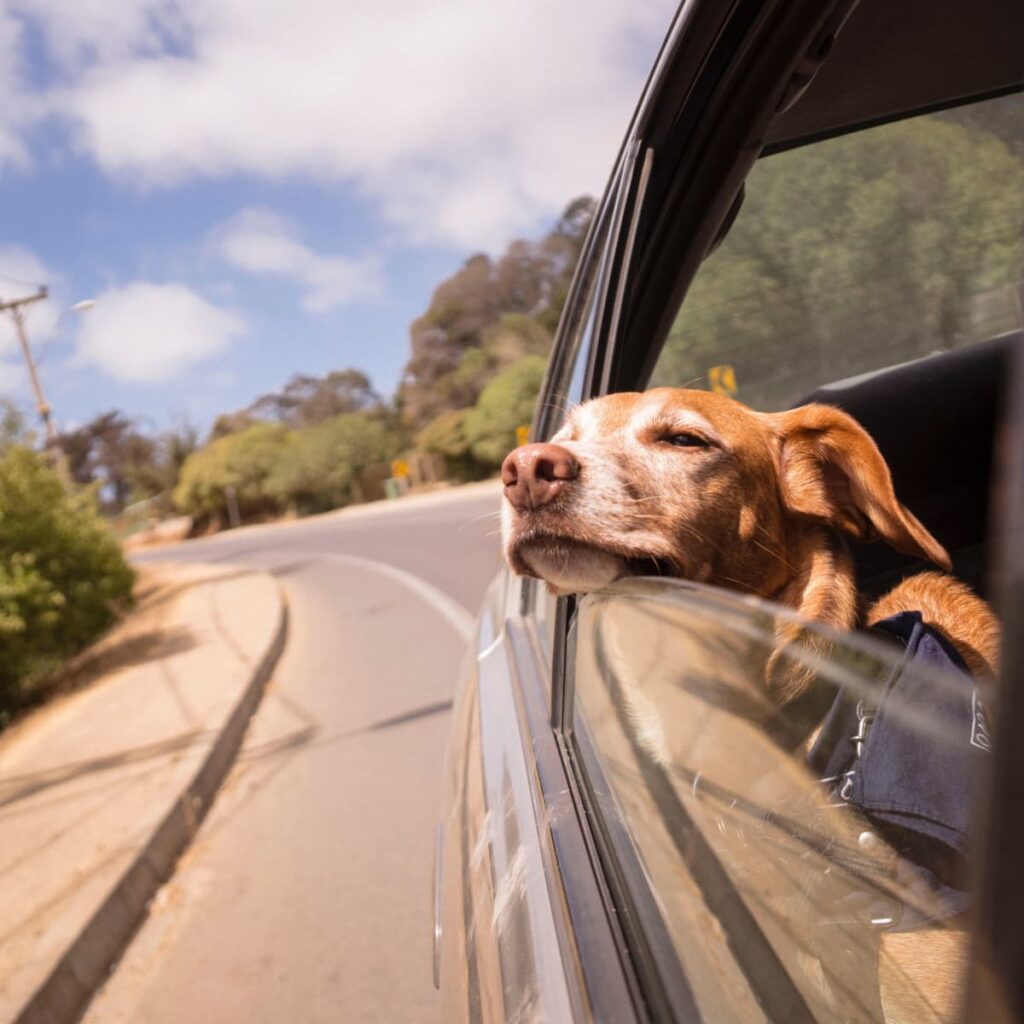
This image is property of images.saymedia-content.com.
Work on desensitization training
Desensitization training is an effective method to help your pet gradually overcome their fear or anxiety related to car rides. Start by acclimating your pet to the car in stationary sessions. Allow them to enter the car, reward calm behavior, and gradually increase the duration of their stay without any movement. This will help your pet associate the car with a calm and positive environment.
Once your pet is comfortable with stationary sessions, gradually introduce movement to the training. Start with short drives around the neighborhood, rewarding calm behavior and slowly increasing the duration and difficulty of the trips. This step-by-step approach will help your pet build confidence and gradually overcome their fear or anxiety associated with car rides.
Associate car rides with pleasant activities to further reinforce positive associations. For example, take your pet to their favorite park or introduce a fun game or puzzle toy during car rides. By associating enjoyable experiences with car rides, you can help reshape your pet’s perception and make the journey a more positive and enjoyable experience for them.
Seek professional help if necessary
If despite your best efforts, your pet continues to experience significant anxiety or stress during car rides, it may be beneficial to seek professional help. Consulting with a certified animal behaviorist can provide you with expert guidance and personalized strategies to address your pet’s specific needs.
Consider professional training sessions to further assist your pet in overcoming their car anxiety. A professional trainer can work with you and your pet to develop a customized training plan tailored to their individual behavior and triggers. These sessions can help desensitize your pet to car rides and provide you with valuable techniques to manage their anxiety.
Explore specialized services or therapies that may be available in your area. Some pet daycare centers or specialized pet transport services offer customized solutions for pets with anxiety or behavioral issues during car rides. These services may include experienced staff, specialized vehicles, or alternative calming techniques that can help your pet have a more relaxed and stress-free travel experience.
In conclusion, keeping your pet calm during car rides is important to ensure their safety, well-being, and overall happiness. By preparing in advance, securing your pet safely, creating a comfortable environment, considering alternative anxiety-relief strategies, providing regular breaks, playing soothing music or white noise, practicing positive reinforcement, limiting the car ride duration, working on desensitization training, and seeking professional help if necessary, you can significantly reduce your pet’s stress and anxiety during car rides. Remember, a calm and happy pet makes for a more enjoyable and worry-free journey for both you and your furry friend.
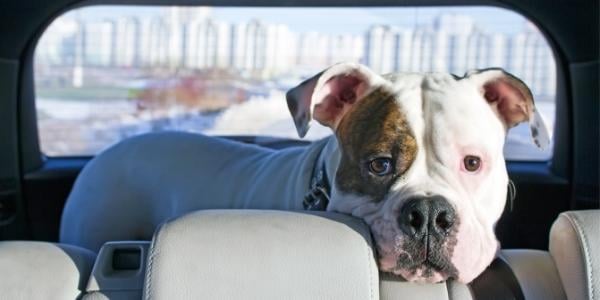
This image is property of www.preventivevet.com.
